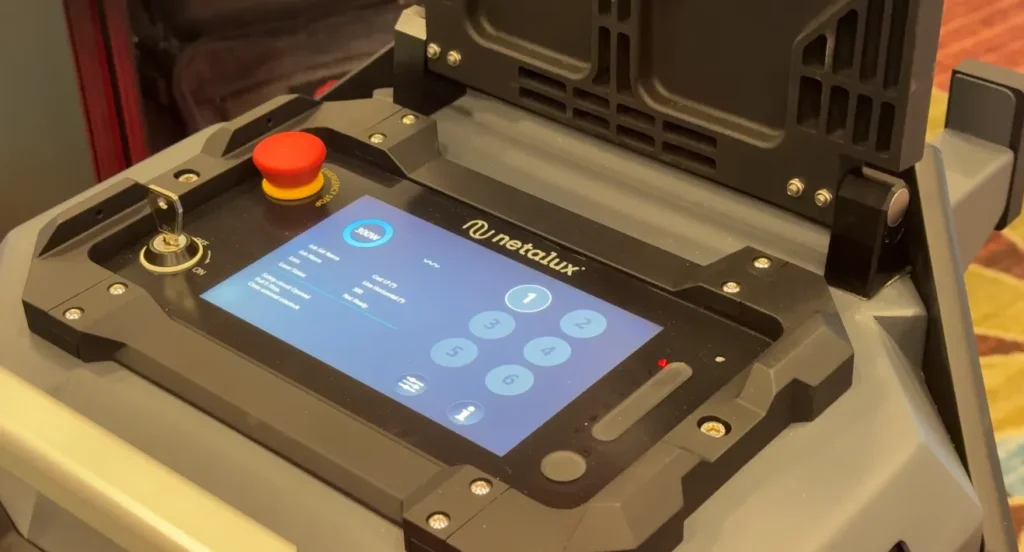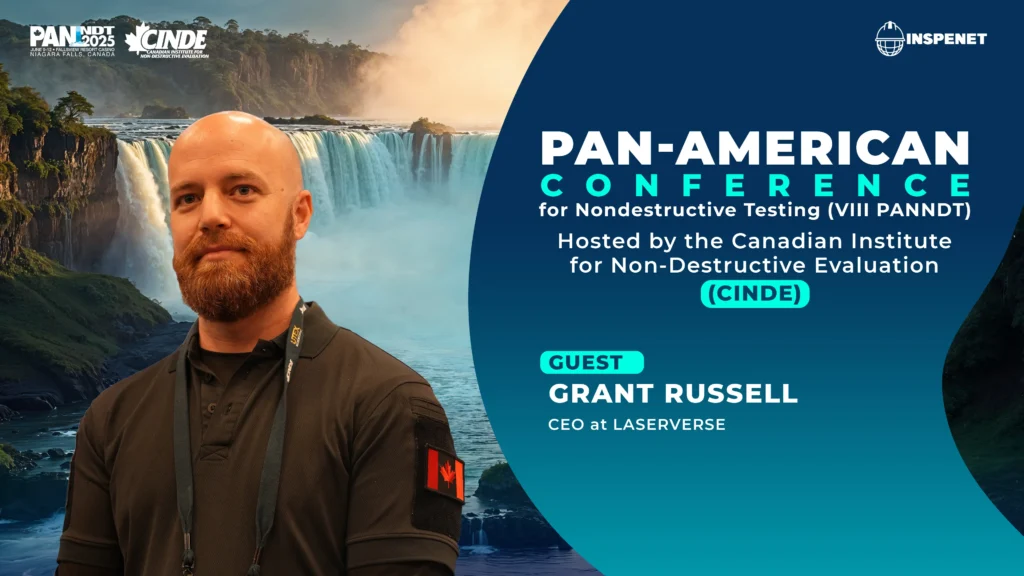Industrial laser cleaning: Precision in the service of NDTs
As part of the PANNDT event, which specializes in non-destructive testing (NDT), the Inspenet team had the opportunity to talk with Grant Russell, CEO of Laserverse, a Canadian company that is transforming industrial laser cleaning. Russell shared details about the operation, applications and benefits of their equipment, especially in environments where accuracy and safety are vital.
A no-waste, no-wear solution
The company develops machinery for industrial laser cleaning capable of removing oxides, paints, coatings or contaminants from surfaces such as steel, concrete, wood or aluminum without damaging the base material and without generating by-products or dust at significant levels, which reduces the need for containment and avoids the use of abrasive or hazardous chemicals.
First, our environmentally friendly approach, we do not generate by-products as a result of our cleaning process, so it is relatively dust-free. I wouldn't say one hundred percent, but almost. [...] Also, our process is not as noisy as traditional methods and does not present the same physical risks.
Grant Russell.
Key in preparation for NDT
Nondestructive testing requires clean, residue-free surfaces to detect microfractures, porosities or surface defects, and this is where Laserverse technology is particularly valuable.
Laser cleaning makes it possible to remove coatings without filling defects, as can happen with chemicals that leave residues. This ensures optimal preparation for techniques such as liquid penetrant (PT), ultrasonic (UT) or magnetic particle (MT), improving the reliability of the results.
Heritage conservation: stone can also be cleaned
The company's equipment is used in industries such as energy, metalworking, aviation and construction, and is even finding applications in the historic preservation sector. Russell highlighted a project for the Toronto Hydroelectric Station, a building with limestone facades protected by heritage regulations.
The station, of historical and architectural value, has a facade made of limestone blocks carved by hand in the early 20th century. The objective is to restore its original appearance without compromising its structural integrity or affecting the stone's handwork, which they can achieve by means of industrial laser cleaning, removing layers of dirt, soot and environmental wear accumulated over decades, without applying pressure or mechanical friction.
Two models for different needs
Laserverse markets different models of equipment according to technical needs. Among them, the following stand out:
- Django 1000: large format equipment, ideal for large surfaces, which cleans without removing material from the substrate. For example, when treating steel, it removes paint or contamination without affecting the base coat.
- Needle: smaller but with higher power density, it allows profiling surfaces, passivate stainless steel welds or work in confined spaces with great precision.

Operational safety and regulatory compliance
On the other hand, Class 4 laser operations require specialized training, which is why the company partners with Canadian Laser Safety to offer LSO (Laser Safety Officer) courses. Each customer receives customized technical training to ensure proper handling of the equipment, avoiding risks and complying with local and international regulations.
A drive for efficiency and sustainability
During the interview, Russell emphasized how his customers are reducing operating costs and downtime. In industries where pre-inspection cleaning can take days, the laser reduces the task to hours, with no need for encapsulation or waste.
Laserverse is not only improving how surfaces are cleaned, but redefining the role of cleaning within critical processes such as NDT. With adaptable, safe and environmentally friendly equipment, the company is leading a trend that combines advanced technology with environmental commitment.
For more content on PANNDT 2025, visit our YouTube channel and our LinkedIn profile.
Source: Inspenet.

